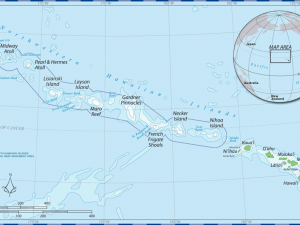Hawai‘i and Pacific Islands
Climate change impairs access to clean water and healthy food, undermines human health, threatens cultural resources and the built environment, exacerbates inequities, and disrupts economic activity and diverse island ecosystems. Adaptation efforts that build upon community strengths and center local and Indigenous Knowledge systems improve resilience.
- Climate change impairs access to healthy food and water
- Climate change undermines human health, but community strength boosts resilience
- Rising sea levels threaten infrastructure and local -- economies and exacerbate existing inequities
- Responses to rising threats may help safeguard tropical ecosystems and biodiversity
- Indigenous knowledge systems strengthen island resilience
Key messages adapted from the Hawaiʻi and US-Affiliated Pacific Islands chapter of the Fifth National Climate Assessment.
Looking for previous content for the Hawai‘i and Pacific Islands region?
Related Case Studies & Action Plans

Photo attributed to Michael Oswald. This work has been released into the public domain by its author. No endorsement by licensor implied.

This work has been released into the public domain because it contains materials that originally came from the U.S. National Oceanic and Atmospheric Administration. No endorsement by licensor implied.

Photo attributed to Diego Delso, delso.photo. Incorporated here under the terms of the license CC BY-SA. No endorsement by licensor implied.

This image has been released into the public domain because it contains materials that originally came from the National Park Service. No endorsement by licensor implied.
Related Tools


NOAA Digital Coast


